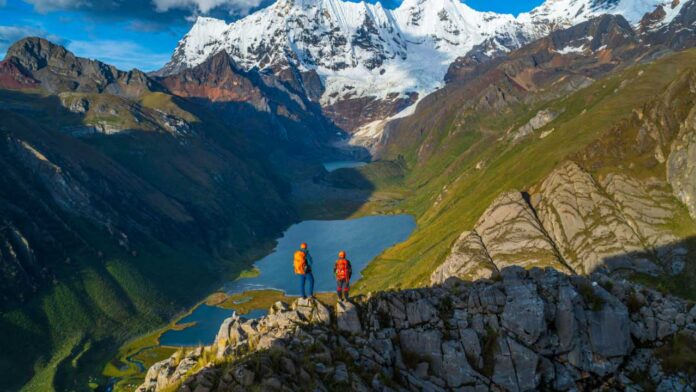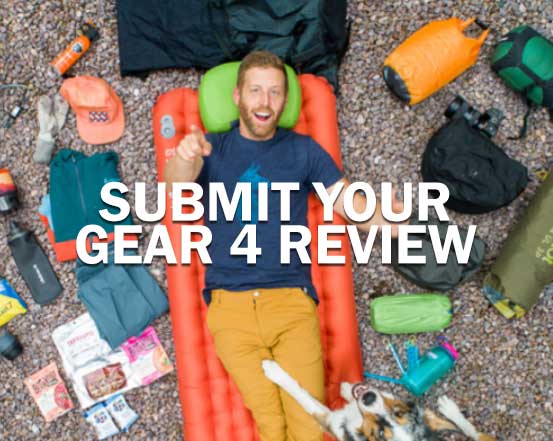After several decades of backpacking, I'm still learning new ways to enhance this awesome pastime. Every year I'm fortunate to be able to test loads of new gear. Sometimes, things don't go so well, but I often discover great gadgets that make my outdoor life easier, and more enjoyable. This year, in particular, unveiled some major stand-outs for the best gear of the year.
So without further adieu, these are my top-picks that you might want to check out for yourselves.
Zenbivy Light Bed 10-Degree
Sleep is one of the most crucial aspects of the backpacking equation. Take it from someone who has spent thousands of nights under the stars, it really stinks when you have to trudge on the next day, grumpy and stiff after a restless night.

Versatile Sleep System
Sure, if you're just doing a night out here and there, you can get by with just about anything. But if you're an avid camper, you have to get a comfortable sleep system. This year, I crawled into the Zenbivy Light Bed, and haven't looked back.
Attachable Quilt
The Zenbivy Light Bed, is an R-5 rated quilt and sheet system that can attach to a sleeping mat. It's available in 3 different temperature ratings: 10-degrees, 25-degrees, and 40-degrees (Fahrenheit), and also a variety of sizes (with prices ranging from $458 – $498 USD).
Fits with a Large Mattress
I have the large 10-degree version, which is compatible with a 25-inch-wide by 77-inch-long mattress. I like sliding into the entire system on those cool and cozy nights, but in warmer conditions, you can scale back the setup by simply draping the quilt overtop, which lets some body heat and maybe a wandering leg escape.
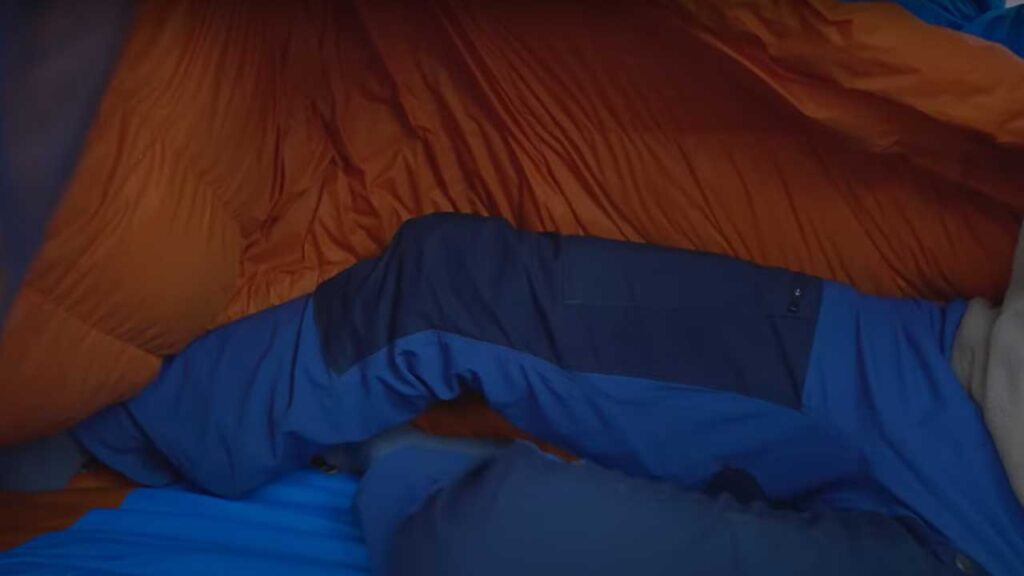
Hooks and Straps vs Zippers
The Zenbivy uses hooks and straps, rather than zippers, to attach the quilt around the sleeping pad. This makes for an easy assembly and brings the comfort factor more inline with a standard sleeping bag. Also, the sheet comes with a massive hood, which allows for a pillow, and still enough room to move around (good for all you shifty sleepers out there).
The weight of the Zenbivy (quilt/ sheet but minus the sleeping pad) varies depending on size. Here is the chart that Zenbivy provides for the 10-degree version:
Weight (Quilt + Sheet)
Regular-20×72: 2 lb 10 oz (1.19 kg)
Large-20×72: 2 lb 15 oz (1.33 kg)
Large-25×77: 3 lb (1.36 kg)
XL-25×77: 3 lb 5 oz (1.50 kg)
Ultralight Design Core
We can credit the ultralight backpackers for pointing out that the bottom half of a sleeping bag gets so compressed, that the down hardly offers much insulation throughout the night. So why not just ditch that part and combine a top-quilt with a quality inflatable mattress? That's the idea behind Zenbivy's Light Bed.
Cold Weather
The 10-degree (Fahrenheit) version totally gets the job done when it's cold out, and because it can be unhooked and partially thrown off your body if you find yourself overheating, it can accommodate warmer temperatures than an equivalent sleeping bag.
Warmer Weather
However, if you're looking for a comfortable sleep system but regularly head into temperate terrain, then you may want to consider the 25-degree, or even their 40-degree options instead (which will also shave off more weight). But whatever the case, a quilt over a sleeping bag (or rather, instead of) might be the way to go for you.
Click here to get more Sleeping Tips for Backpacking.
Big Agnes Copper Spur MTNGLO 2P Tent
The Big Agnes Copper Spur MTNGLO tent posts a premium price point of $599.95 (USD), but it is worth every penny. I've used a lot of different shelters throughout my backpacking tenure, and this one is my hands-down favorite. The best feature is the massive doorway.
Zipper Design is Great
The specially designed zippers allow for the front and back entrance to open completely up, and to be fashioned into an awning. This makes for a casual hangout space, and offers light protection from the elements without having to hide in a cramped tent all day.
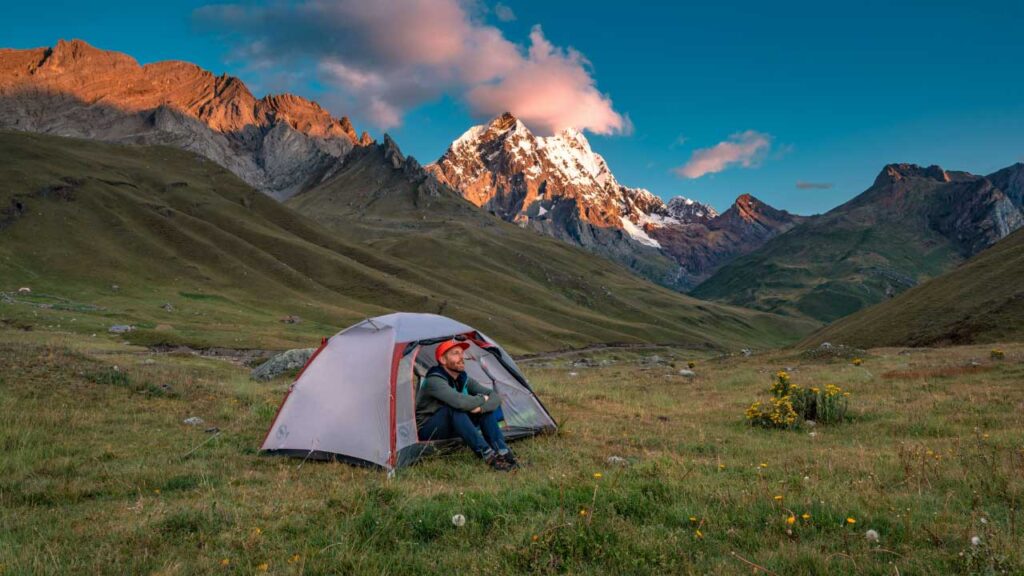
I also love the elevated storage pockets inside. This gets your valuables and random nicknacks off the floor, keeping both you and your tentmate a little more organized (and sane).
Large Headroom
The headroom in this thing is also exceptional for a borderline ultralight tent (2 lbs, 13 oz). The MTNGLO version (which is an optional upgrade over the standard version) has LED lights built-in, which at first I thought was a bit silly, until I went on two early-season trips where the sun set just after dinner.

LED Tent Lighting
Being in a tent for a few hours, in the dark but still too early to sleep, really shows the utility of some pleasant lighting. With that said, the lights and battery unit adds some weight and basic management, so I'll leave it up to you to decide if that part is worth it.
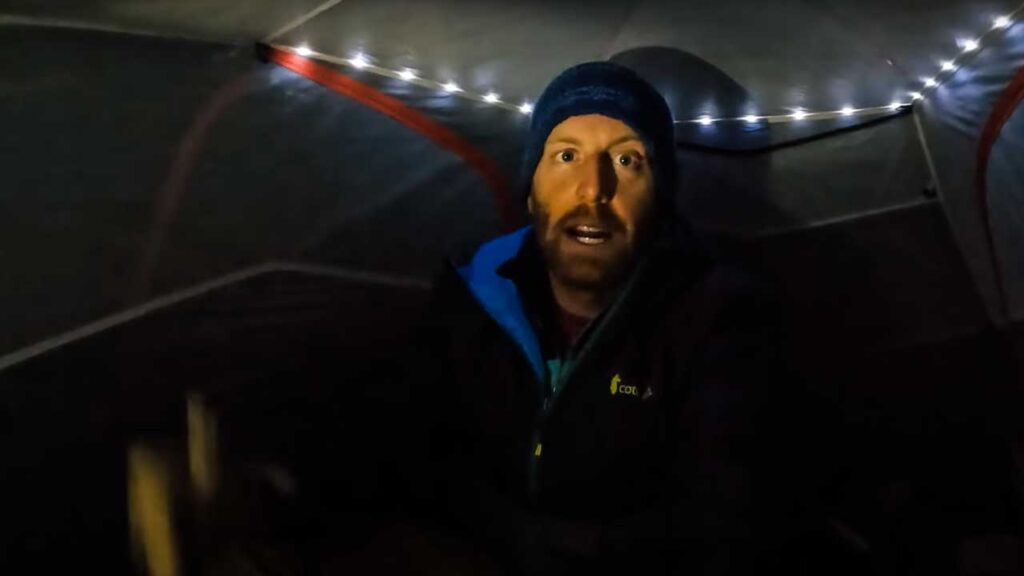
Other than that, this thing does everything that a high quality tent should do. It can handle a range of tough conditions, and it offers excellent ventilation. So other than the price, how can a tent do any better than that?
Jetboil MiniMo Stove and Summit Skillet
I know first-hand that this can be a contentious topic amongst the backpacking community. Last year, I posted a video called Why I'm Ditching the Jetboil – And What I'm Using Instead, and it generated a lot of constructive feedback.

Feedback from Video
This is the way with any comments section, some not-so-constructive criticism from folks, and some great feedback. The theme of the video was about how quick-boil rigs are too easy to fall back on, and push a lot of campers towards dehydrated meals over homestyle cooking.

MSR Pocket Rocket vs Jetboil MiniMo
I ended up promoting MSR's Pocket Rocket as a solution to that problem of passivity. However, I've since come to appreciate Jetboil's more versatile MiniMo stove and skillet combo. It can still do the lightning-fast boil-and-eat method that Jetboil is known for, but because it also has an adjustable flame and a skillet attachment, I can settle in to cooking delicious backpacking meals.
I do also enjoy my Pocket Rocket from time to time. The boil rate isn't quite as fast, but what's the big hurry anyway? Plus, for the budget-conscious backpacker, that rig will save you some coin.
Lifestraw Peak Squeeze
I've had success with several water filtration systems over the years (Grayl Geopress, RapidPure, and MSR Guardian, to name a few), but they are all on the bulkier side. Sure, they have their advantages, but for general backpacking in places with cleaner water sources (such as mountain rivers), the Lifestraw Peak Squeeze is a stellar option.
Lightweight and Affordable
It's lightweight, and only costs $43.95 (USD). The tiny filter attaches directly to the cap. All you have to do is fill up the foldable, durable, 33.8 fl. oz. (just shy of 1L) pouch, screw it on, and squeeze/suck the filtered (note: not purified) water out.
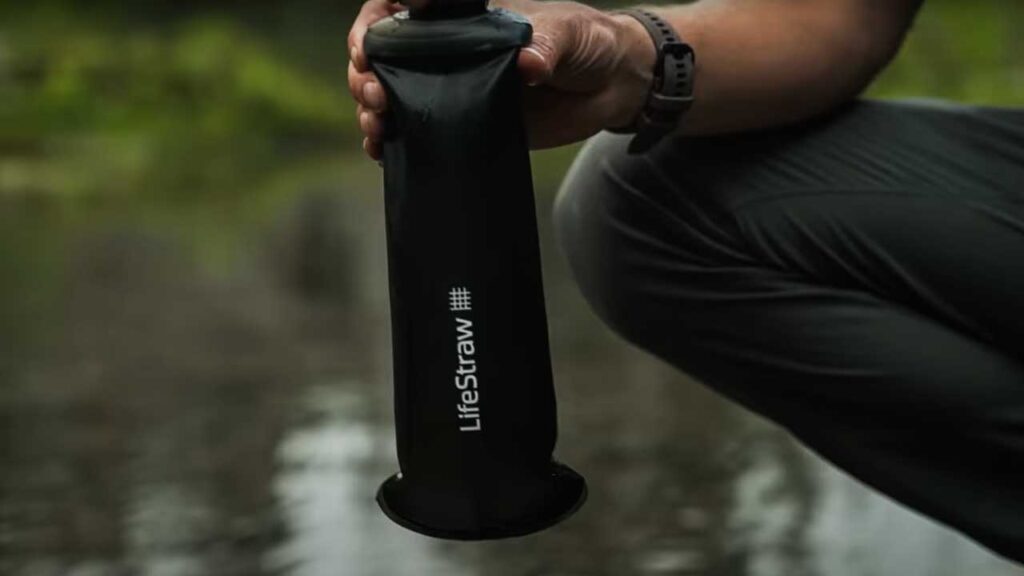
The one downside is that there is an accompanying syringe that you have to carry with you to backflush the filter regularly (or to unclog it). But if you use it correctly, you'll get upwards of 2,000 liters out of this thing, which is good for a ton of backpacking.
For more information about water filters vs water purifiers check out this article: $100 Backpacking Water Filters and Purifiers.
Grand Trunk Compass 360-Degree Stool
I was a pretty minimal, non-chair or stool-using backpacker until I went on a group trip to the Grand Canyon last year. We got to our first camp and the seven other people I was with all busted out their fancy camp seats – leaving me to sit alone on my rock like I was Steven Glansberg. This bit of healthy peer pressure made me realize that one more lightweight item in my pack didn't have to be a pointless burden.
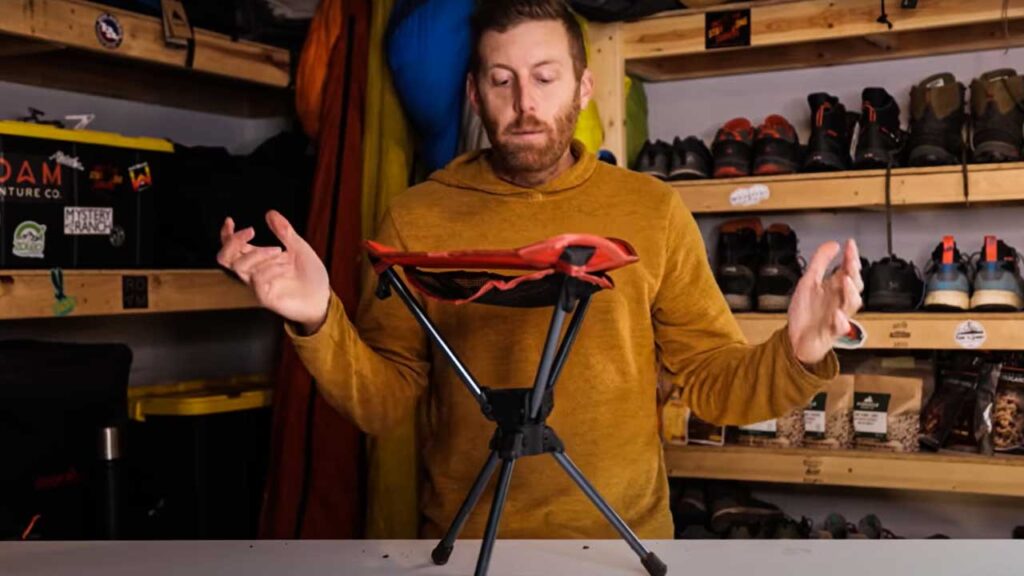
After I started using the 1-pound Grand Trunk Compass 360-Degree Stool, I officially saw the light (pardon the pun…no, embrace the pun!). Not only is it super packable, and pretty darn cheap ($60 USD), but it has added a lot of comfort to my backcountry experience.
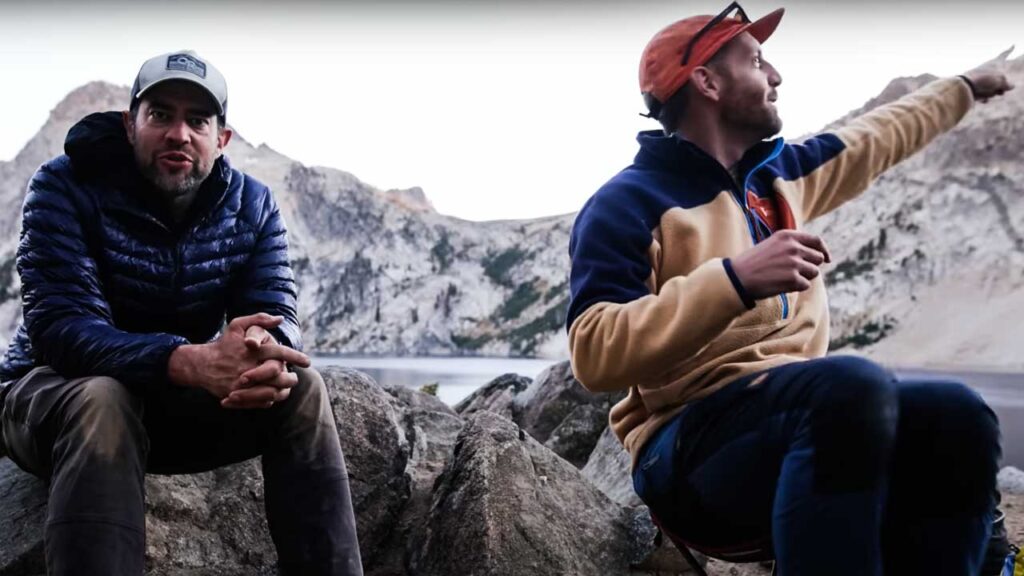
Plus, it's fun (and useful) to be able to spin around in a full circle. Despite how small and somewhat flimsy it looks, the Compass actually has a weight capacity of 230 pounds.
Sea To Summit eVent Compression Dry Sack
Space is always at a premium in a backpack. So having the ability to minimize the amount of volume that your sleeping bag, or your clothes, or your bundles of food take up is super helpful.
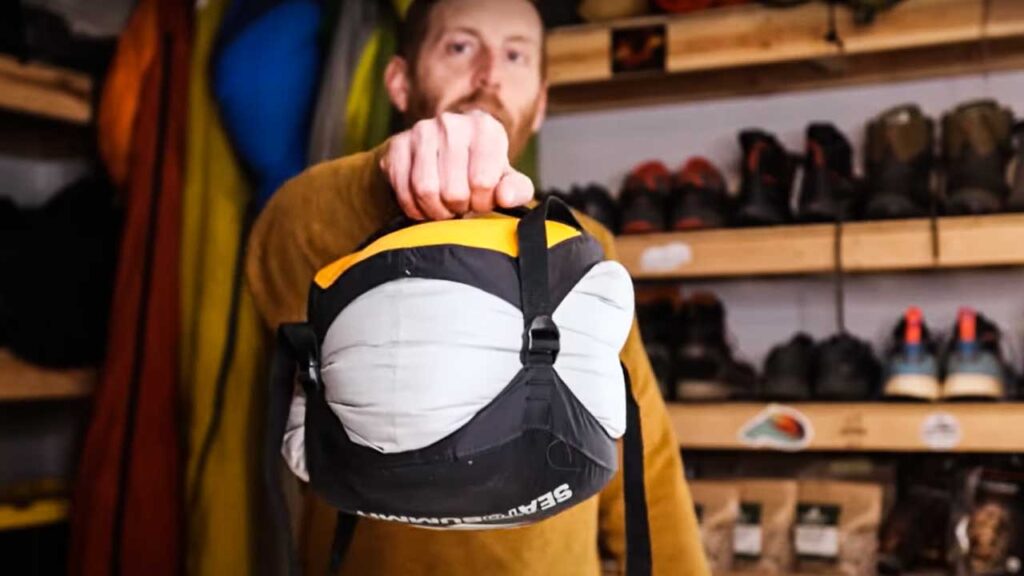
My favorite compression sack is the Sea To Summit eVent Compression Dry Sack. It's crazy how much those softer goods can pack down. This is because as you compress, the air can escape – but it remains waterproof! So not only will it help you organize, but it will protect your gear from the elements too. They offer different volumes between 6 to 30L, and the prices vary depending on size.
Matador Flatpak Dry Bag
Another beauty carry-case I like is the Matador Flatpak. I use it to hang food at night (to keep the bears and rodents at bay), as another pack organizer, and occasionally even as a water hauling device around camp. The feature that makes this unit different is the flat bottom.
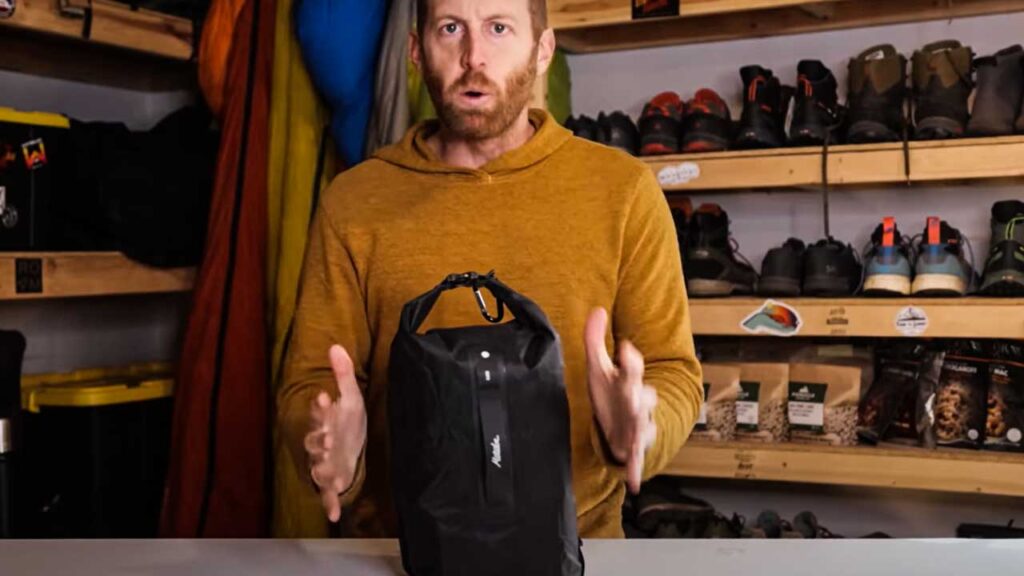
Unlike Standard Compression Sacks
Unlike standard compression sacks that have a hard time holding an upright posture, I can just plop the Matador down and walk away without worrying about it tipping over and spilling out. At $40 and 2.3 ounces, there's not much to overthink here. It's just a great “whatever” bag to include in your kit.
Hillsound Packstack Pro
Yet another handy, mostly waterproof organizer I dig is the Hillsound Packstack Pro. I actually find myself using it as a camera case, since it's so much lighter than my usual media unit. I'll jam some puffy clothes in there for added protection (and to make use of the space), and then I don't have to worry about anything getting damaged or wet.
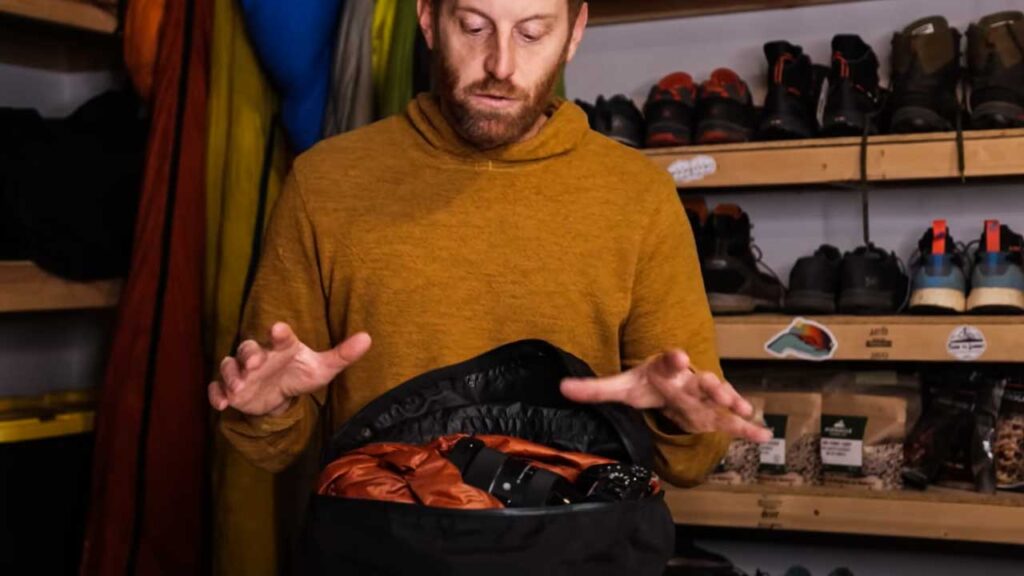
At only $30 (USD), 4 ounces, and with a capacity of 6.4 L (Oh! and it has a sweet trekking bag contour design for economical packing) this is another simple, no-brainer addition to my arsenal.
Appalachian Gear Company All-Paca Fleece Hoodie
Appalachian Gear Company is a wholesome little cottage brand based in the U.S. They make a bunch of cool clothes out of alpaca wool, including my all-time favorite mid-layer, the All-Paca Fleece Hoodie. Alpaca wool is one of nature's best, most-efficient fibers. You don't need a lot of it to stay warm, and yet somehow I'm still comfortable in it when the midday temperature starts to rise. It even continues to insulate when it's wet!
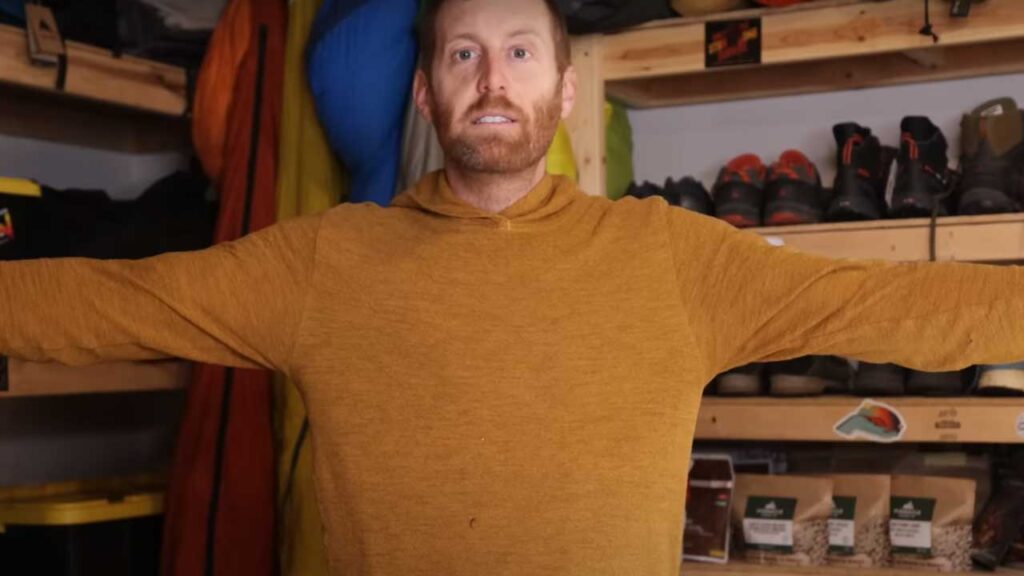
Odor Resistant Material
And the best part is it's odor-resistant. Having a wide zone in which a piece can be utilized, again and again, really helps simplify my wardrobe while backpacking/traveling. The price-point may be a bit high for some people's liking ($165 USD), but I promise you the quality makes it worth it. If you're sold, just note that these hoodies run big. I usually wear a medium and this time I had to go with a small.
Fjallraven Keb Agile Trousers
My top-pick for the year goes to Fjallraven Keb Agile Trousers. The weight feels supportive, yet fluid, they have a bit of stretch to them, there's reinforcement around high-abrasion sites (ankles/knees), and the agile version is a bit more breathable than the regular Keb (which I love for the winter) – so these things are good to go for some hardy hiking adventures.

A Bit Pricey but High Quality
As is the theme with much of my favorite gear from 2022, these pants are on the pricey side ($194.95 USD), but if you're out there on the regular, you know that a few good pieces of high-quality stuff is worth not having to constantly struggle in, and then replace, mediocre alternatives.
Subscribe to Our Newsletter and Come Back!
That does it for my top gear recommendations from my many 2022 trials. I took all of this stuff into a range of real-world settings, and I can give you my scout's honor seal of approval, double thumbs up, 10 out of 10 (would buy again), and every other form of endorsement possible.

Gear used in this video includes:
The Winners Circle:
– Zenbivy Light Bed
– Big Agnes Copper Spur MTNGLO tent
– Jetboil MiniMo Stove and Summit Skillet
– Lifestraw Peak Squeeze
– Grand Trunk Compass 360-Degree Stool
– Sea To Summit eVent Compression Dry Sack
– Hillsound Packstack Pro
– Appalachian Gear Company All-Paca Fleece Hoodie
– Fjallraven Keb Agile Trousers
Other gear in this article:
But don't just take my word for it, scroll through some of the online reviews to see what the rest of the community is saying. As always, if you're hungry for more gear breakdowns and outdoorsy content, head on over to BackpackingTV.



